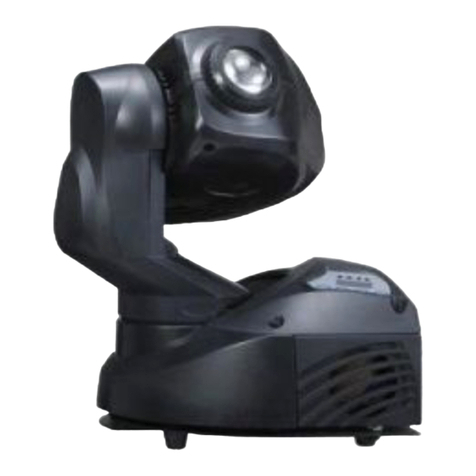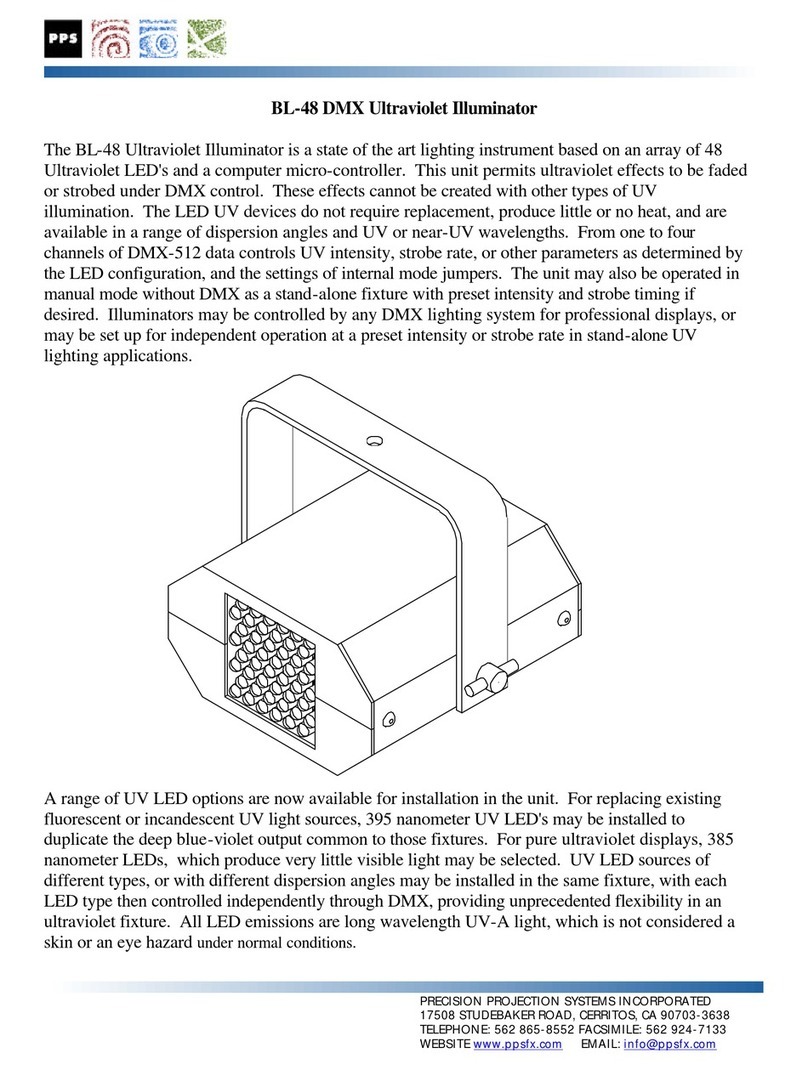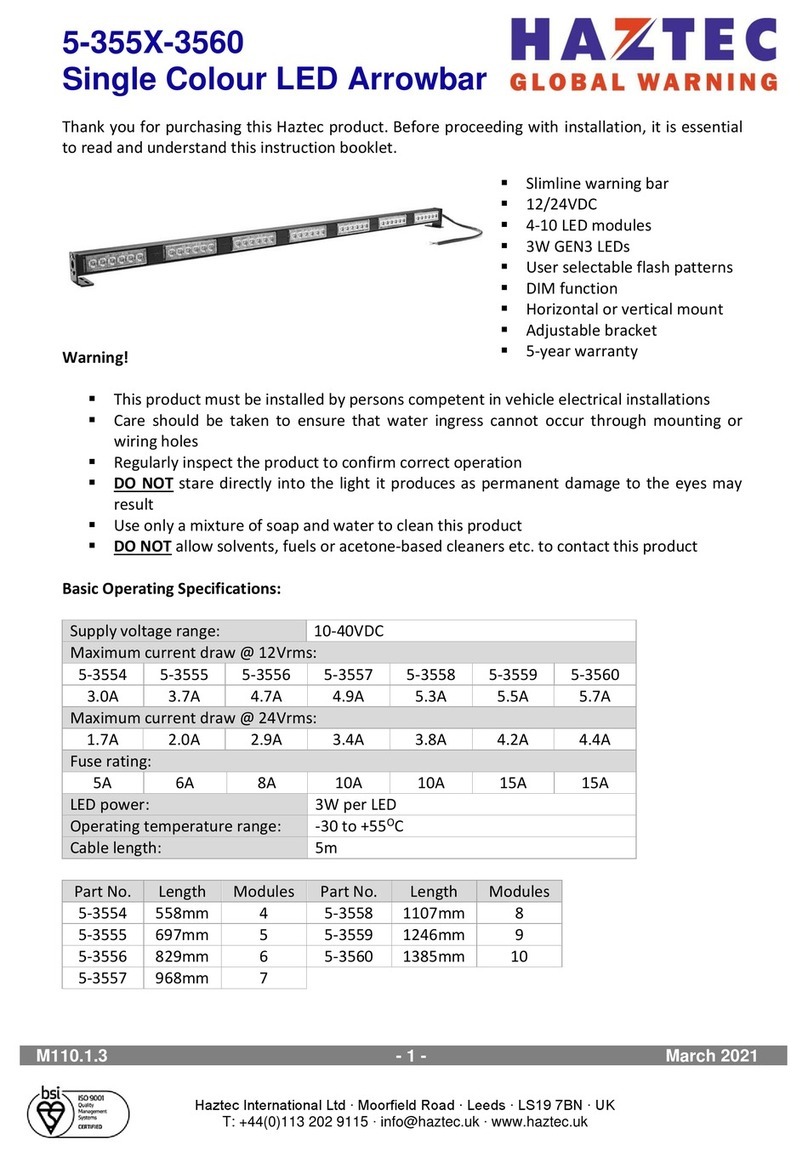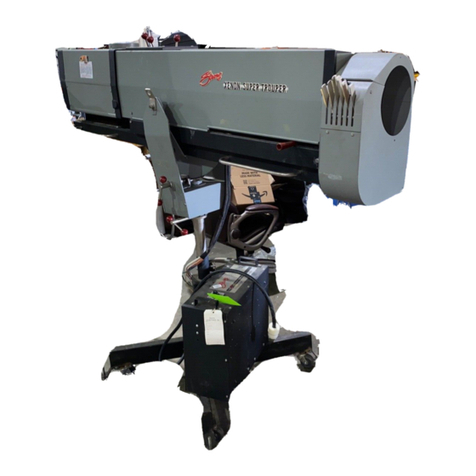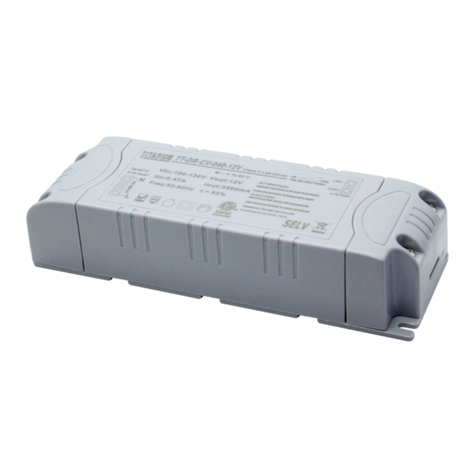GAZ IZAR SO Service manual

REV.02 / 23/10 · 5154000222
Single battery-emergency luminaire according to
DIN VDE V 0108-100-1, DIN VDE V 0108-200, DIN EN 50172,
DIN EN 60598-2-22, DIN EN 60598-1, DIN EN 1838, DIN EN 62034
General
Please read and observe the instruction carefully, to guarantee a safe and reliable ope-
ration of the product. Keep this instruction for future reference and questions. In the
event of a general power supply failure, the product works in this particular circuit with
markings or with illumination of the escape route. Additional the operating instructions
of the systems must be observed. Generally use only original spare parts.
Security guidelines
Please observe the national safety regulations and installation guidelines. Installation
may only be carried out by a person qualified in the field of electrical engineering.
Switch off the supply voltage before working on the product.
Installation
The mounting height must equal at least 2 m (lower edge of the illuminated surface).
Only the holes provided for this purpose are to be used for mounting and cable entry.
The product may only be used in accordance with its designated protection type and
protection class. The cable to be inserted must not exert any lateral forces on the cable
bushing and should only be kinked approx. 150 mm above the entry point. Connecti-
on and commissioning are carried out according to the labelling on the terminals and
in compliance with these operating instructions. The sequence of the labelling and the
number of terminals may vary.
Connection and commissioning
Please note the safety guidelines for working on electrical systems! The connection is
according to the marking at the terminals, in compliance with the enclosed operating
instructions.
Attention: Connect the battery before operating the device!
After connecting the rechargeable battery and switching on the supply voltage, it must
not be switched off again until after an initialization phase of 4 days. During the char-
ging and discharging processes of the rechargeable battery, the lamp switches on and
off sporadically. Caution: If the initialization process is interrupted by a power failure,the
process restarts after 30 minutes. If the emergency lighting supply module is without
external power supply during longer maintenance work,the battery must be disconnec-
ted from it.
Important: The initialization must be recorded in the test logbook.
Function test
According to the regulations DIN EN 50172 as well as DIN VDE 0108-100, the safety
lighting system – including the luminaires – must be tested for proper functioning at
regular intervals. When operating the product on a testing and monitoring device, the
corresponding operating instructions must be observed.
Illuminant
Attention!A damaged, used luminant can no longer reach the required illumination and
affects the security function of the emergency luminaire.Therefore replace the demaged
or used luminant immediatly. Use only original LEDs by the manufacturer.
Note battery
To maintain the charge of the rechargeable battery, 230 V AC must be constantly sup-
plied.In case of a longer interruption of the mains supply,the rechargeable battery must
be disconnected to avoid a deep discharge and thus damage. If the single battery light
is not used, the battery must be charged at least once every six months. This must be
documented.
Battery replacement
Please observe the safety guidelines for working on the lamp! The battery replacement
must be carried out without voltage.Only batteries from the manufacturer may be used.
After the battery has been replaced, a quick test must be done.After battery replacement
and/or software update, the initialization process starts again. Defective batteries must
not be disposed of in household waste.
Warranty
You receive a one-year warranty on our products. Please refer to our General Terms and
Conditions. This warranty only applies if the product has not been modified and is in-
stalled and operated in accordance with these operating instructions. Luminaires and
batteries are wear parts.
Care
Do not use any cleaning agents containing solvents for cleaning.
Disposal
Please note the valid regulations when recycling and disposing defect systems.
We reserve the right to change the products without notice.
Montage- und Betriebsanleitung
mounting and operating instructions
IZAR SO, IZAR AO
green
is safe
GAZ Notstromsysteme GmbH
August-Horch-Straße 18
08141 Reinsdorf | Germany
Telefon:+49(0) 375 77066-0
E-Mail: [email protected]
www.gaz.de
Haben Sie Fragen?
Dann rufen Sie uns einfach an!
Wir helfen Ihnen gern.
Contact us!
Einzelbatterie | single battery
SC compatibel
Status display Test button
LED LED Meaning
ON OFF battery / charge / illuminant OK
flashing OFF Battery fault / charging fault
ON flashing Illuminant error
flashing green / yellow alternately battery fault and lamp fault
flashing green / yellow together short test / long-term test
flashing 2 x green / 2 x yellow alternately
battery initialization
OFF OFF
emergency operation / no mains voltage
The lamp must be disconnected from the power supply while a fault is being fixed!
Test activation
Short test:
Activation: manually, 1x short press of the pushbutton
Test duration: 40 s
Test: lamp and battery
Weekly test:
Activation: automatic, once a week
Test duration: 40 s
Test: illuminant and battery
Reset weekly test timer: press button for 10 s
Operating duration test:
Triggering: manual, 3 x short push of the button, once a year
Test duration: depending on battery runtime (1 h, 3 h or 8 h)
Test: illuminant and battery
Termination: short one-time pressing of the pushbutton
Tests or inspections can be triggered using the corresponding pushbutton to detect
faults reliably.
After rectifying battery and/or lamp faults, a quick test must be performed via the
pushbutton or the easyCONTROL system (if available, follow the instructions.
Connection diagram
Distribution
AKKU
NETZ
BUS
NLB OUT IN
HIGH
LOW
HIGH
LOW
+
–
LED
PT
L‘ N L
3 x 1,5 qmm /
4 x 1,5 qmm
VSG0003-S06
without emergency
light blocking:
J-Y(ST)Y 2x2x0.8
with emergency
light blocking:
J-Y(ST)Y 4x2x0,8
optional: emergency
light blocking
optional
BUS IN
BUS OUT
+
optional: Steckplatz für
Platine easyCONTROL
Luminaire terminal
2 x 0,5 mm2– 2,5 mm2
N-neutral conductor
protective conductor
L-continious conductor
L‘-switched phase
open the luminaire
1.) loosen the screws of upper part and
2.) loosen the mounting plate
connect the supply line
note the wiring diagram
lower part
position drill hole (ø 20 mm) for cable entry as required
drill hole (ø 4 mm) for fastening
fasten the lower part
1 4
screw on the mounting plate
5
screw on the upper part
6
2
3
1.) 1.)
2.) 2.)

Einzelbatterie-Notleuchte gemäß DIN VDE V 0108-100-1,
DIN VDE V 0108-200,DIN EN 50172, DIN EN 60598-2-22,
DIN EN 60598-1, DIN EN 1838, DIN EN 62034
Allgemein
Lesen und beachten Sie dieseAnleitung bitte sorgfältig, um einen sicheren und zuverläs-
sigen Betrieb des Produkts zu gewährleisten. Bewahren Sie dieseAnweisung gut auf, um
auftretende Fragen beantworten zu können. Das Produkt übernimmt bei Ausfall der all-
gemeinen Stromversorgung im jeweiligen Stromkreis die Kennzeichnung oder die Aus-
leuchtung des Rettungsweges.Zusätzlich sind die Bedienhinweise des Sicherheitsstrom-
versorgungssystems zu beachten.Generell sind nur Originalersatzteile zu verwenden.
Sicherheitsrichtlinien
Bitte beachten Sie die nationalen Sicherheitsbestimmungen und Installationsrichtlinien.
Die Installation darf nur durch eine im Bereich der Elektrotechnik qualifizierte Person
erfolgen. Schalten Sie die Versorgungsspannung ab,bevor Sie an dem Produkt arbeiten.
Montage
Die Montagehöhe muss mindestens 2 m (Unterkante leuchtende Fläche) betragen.
Für die Befestigung und Kabeleinführung sind nur die dafür vorgesehenen Löcher zu
verwenden. Das Produkt darf nur entsprechend seiner ausgewiesenen Schutzart und
Schutzklasse verwendet werden. Das einzuführende Kabel darf keine Seitenkräfte auf
die Kabeldurchführung ausüben und sollte erst ca. 150 mm über der Einführungsstel-
le geknickt werden. Der Anschluss und die Inbetriebnahme erfolgen entsprechend der
Kennzeichnung an den Klemmen unter Beachtung dieser Bedienungsanleitung. Die
Reihenfolge der Kennzeichnung und die Anzahl der Klemmen kann variieren.
Anschluss und Inbetriebnahme
Bitte beachten Sie die Sicherheitsrichtlinien für das Arbeiten an elektrischen Anlagen!
Der Anschluss erfolgt entsprechend der Kennzeichnung an den Klemmen unter Beach-
tung der beiliegenden Bedienungsanleitung.
Achtung: Vor Inbetriebnahme Akku anstecken!
Nach Anschluss des Akku und Zuschaltung der Versorgungsspannung darf diese erst
nach einer Initialisierungsphase von 4 Tagen wieder abgeschaltet werden. Durch
die Lade- und Entladevorgänge des Akku schaltet die Leuchte sporadisch an und aus.
Achtung: Sollte der Initialisierungsvorgang durch Spannungsausfall unterbrochen wer-
den, beginnt dieser nach 30 Minuten von vorn. Ist das Notlichtversorgungsmodul bei
längeren Wartungsarbeiten ohne externe Stromversorgung, muss der Akku von diesem
getrennt werden.
Wichtig: Die Inbetriebnahme ist im Prüfbuch zu protokollieren.
Funktionstest
Es ist gemäß den Vorschriften DIN EN 50172 sowie DIN VDEV 0108-100-1 gefordert, die
Sicherheitsbeleuchtungsanlage – einschließlich der Leuchten – in regelmäßigen Abstän-
den auf ihre Funktion zu prüfen. Bei Betrieb des Produkts an einer Prüf- und Überwa-
chungseinrichtung ist die entsprechende Bedienungsanleitung zu beachten.
Leuchtmittel
Achtung! Ein defektes, verbrauchtes Leuchtmittel erreicht nicht mehr die geforderte Be-
leuchtungsstärke und beeinträchtigt so die Sicherheitsfunktion der Notleuchte.Ersetzen
Sie deshalb die defekten oder verbrauchten Leuchtmittel sofort. Es sind nur die original
LED-Module des Herstellers zu verwenden!
Hinweis Akku
Für die Ladungserhaltung des Akkus müssen ständig 230 V AC anliegen. Bei längerer
Netzunterbrechung ist der Akku abzuklemmen um eine Tiefentladung und damit eine
Schädigung zu vermeiden. Bei Nichtbenutzung der Einzelbatterieleuchte ist der Akku
mindestens einmal halbjährlich zu laden. Dies ist zu dokumentieren.
Akkutausch
Bitte beachten Sie die Sicherheitsrichtlinien für das Arbeiten an der Leuchte! Der Ak-
kutausch ist spannungsfrei durchzuführen. Es dürfen nur Akkus vom Hersteller verwen-
det werden. Nach dem Akkutausch ist ein Kurztest durchzuführen. Nach dem Akkutausch
oder/und Software-Update, beginnt der Initialisierungsvorgang von Neuem. Defekte
Akkus dürfen nicht im Hausmüll entsorgt werden.
Gewährleistung
Auf unsere Produkte erhalten Sie ein Jahr Gewährleistung. Siehe dazu unsere allgemei-
nen Geschäftsbedingungen (AGB). Diese Leistung tritt nur in Kraft, wenn das Produkt
nicht verändert wurde und entsprechend dieser Bedienungsanleitung montiert und
betrieben wird. Leuchtmittel undAkkus sind Verschleißteile.
Pflege
Zur Reinigung keine lösungsmittelhaltigen Reiniger verwenden.
Entsorgung
Beachten Sie die Bestimmungen für Recycling und Entsorgung.
Wir halten uns das Recht vor, die Produkte ohne Mitteilung zu verändern.
Statusanzeige Prüftaster
LED LED Bedeutung
EIN AUS Akku / Ladung / Leuchtmittel OK
blinkt AUS Akkufehler / Ladestörung
EIN blinkt Leuchtmittelfehler
blinkt grün / gelb im Wechsel Akkufehler und Leuchtmittelfehler
blinkt grün / gelb gleichzeitig Kurztest / Dauertest
blinkt 2 x grün / 2 x gelb im Wechsel Initialisierung Akku
AUS AUS Notbetrieb / keine Netzspannung
Während der Behebung eines Fehlers ist die Leuchte spannungsfrei zu schalten!
Auslösung Test
Kurztest:
Auslösung: manuell, 1x kurzes Drücken des Tasters
Testdauer: 40 s
Prüfung: Leuchtmittel und Akku
Wochentest:
Auslösung: automatisch, 1 x wöchentlich
Testdauer: 40 s
Prüfung: Leuchtmittel und Akku
Wochentest-Timer zurücksetzen: 10 s Drücken des Tasters
Betriebsdauertest:
Auslösung: manuell, 3 x kurzes Drücken des Tasters, 1 x jährlich
Testdauer: je nach Stündigkeit (1 h,3 h oder 8 h)
Prüfung: Leuchtmittel und Akku
Abbruch: kurzes einmaliges Drücken des Tasters
Prüftests sollten über den dafür vorgesehenen Taster ausgelöst werden,um Fehler zu-
verlässig detektieren zu können. Nach Behebung von Akku- und/oder Leuchtmittelfeh-
ler,ist ein Kurztest über den Taster oder der Zentrale easyCONTROL (wenn vorhanden,
Anleitung dazu beachten) auszuführen.
Anschlussschema
Verteilung
AKKU
NETZ
BUS
NLB OUT IN
HIGH
LOW
HIGH
LOW
+
–
LED
PT
L‘ N L
3 x 1,5 qmm /
4 x 1,5 qmm
VSG0003-S06
ohne Notlichtblockierung:
J-Y(ST)Y 2x2x0,8
mit Notlichtblockierung:
J-Y(ST)Y 4x2x0,8
optional:
Notlichtblockierung
optional
BUS IN
BUS OUT
+
optional: Steckplatz für
Platine easyCONTROL
Leuchtenanschlussklemme
2 x 0,5 mm2– 2,5 mm2
N-Neutralleiter
Schutzleiter
L-Dauerphase
L‘-geschaltete Phase
Optional: Überwac
Optional: Überwachung mit easyCONTROL
Wenn Sie Ihre Einzelbatterieleuchte mit der Steuer- und Überwachungseinrichtung
easyCONTROL verbinden, benötigen Sie für jede Einzelbatterieleuchte eine Platine.
easyCONTROL Platine EC
leitungsgebundene Kommunikation
Das drahtgebundene Bussystem der Einzelbatterieelektronik wird mit der easyCONTROL
Platine EC (Art.-Nr.1221500009) bestückt.
easyCONTROL Platine FC
Funk-Kommunikation
Dieses Bussystem der Einzelbatterieelektronik wird mit der easyCONTROL Platine FC
(868 MHz) (Art.-Nr.1221500026) bestückt.
easyCONTROL Platine EC/FC
Funk- und leitungsgebundene Kommunikation
Dieses hybride und innovative Bussystem verbindet die vorteilhaften Eigenschaften
einer kabelgebundenen Überwachungseinheit mit der flexiblen Funktionsweise einer
funkgebundenen Einzelbatterieüberwachung. Beim Kommunikationsübergang von
Kabel-Funk und Funk-Kabel wird die dabei eingesetzte Einzelbatterieelektronik mit der
easyCONTROL Platine EC-FC (868 MHz) (Art.-Nr.1221500027) bestückt.
Optional: Monitoring with easyCONTROL
If you connect your self-contained luminaire to the control and monitoring device easyCON-
TROL, you need a circuit board for each self-contained luminaire.
easyCONTROL circuit board EC
wired communication
The wired bus system of the single battery electronics is equipped with the easyCONTROL
board EC (item no. 1221500009).
easyCONTROL circuit board FC
wireless communication
This bus system of the single-battery electronics is equipped with the easyCONTROL circuit
board FC (868 MHz) (item no. 1221500026).
easyCONTROL circuit board EC/FC
wired and wireless communication
This hybrid and innovative bus system combines the advantageous properties of a wired
monitoring unit with the flexible functionality of a wireless-based individual battery moni-
toring system. In the communication transition from wired-wireless and wireless-wired, the
single-battery electronics used are equipped with the easyCONTROL board EC-FC (868 MHz)
(item no. 1221500027).
Unter folgendem Link finden Sie die ausführlichen Bedienungsanleitungen der einzel-
nen Platinen und auch der Steuer- und Überwachungseinrichtung easyCONTROL:
gaz.de/easycontrol
Under the following link you will find the detailed operating instructions for the individual
circuit boards and also for the control and monitoring device easyCONTROL:
gaz.de/easycontrol
DO IT WITH
easyCONTROL
MAKE
IT EASY
Leuchte öffnen
1.) Schrauben von Oberteil lösen
2.) Montageblech lösen
Zuleitung anklemmen
siehe Anschlussplan
Unterteil
Bohrung (ø 20 mm) für Kabeleinführung nach Bedarf positionieren
Bohrung (ø 4 mm) für Befestigung
Unterteil befestigen
1 4
Montageblech anschrauben
5
Oberteil aufschrauben
6
2
3
1.) 1.)
2.) 2.)
This manual suits for next models
1
Table of contents
Languages:
Popular Lighting Equipment manuals by other brands
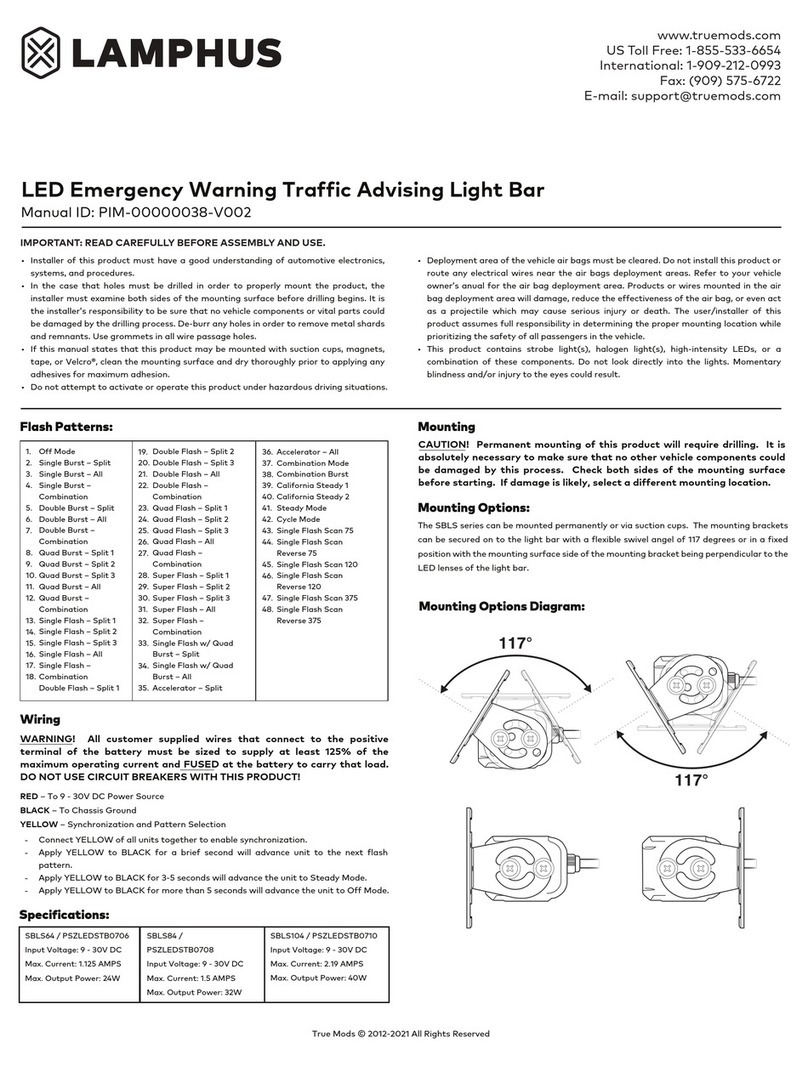
Lamphus
Lamphus PIM-00000038-V002 quick start guide

Core
Core Point 15 user manual
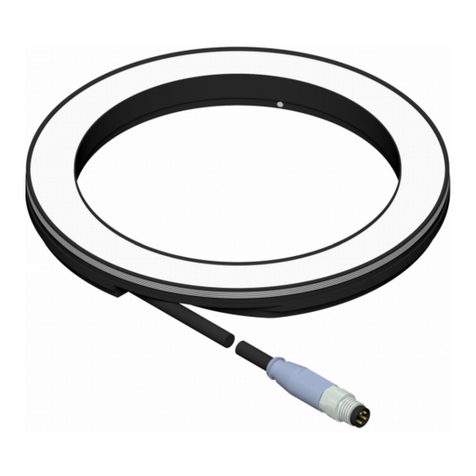
Vision & Control
Vision & Control R-CLR-132x104-G523-SL Installation and operating instructions
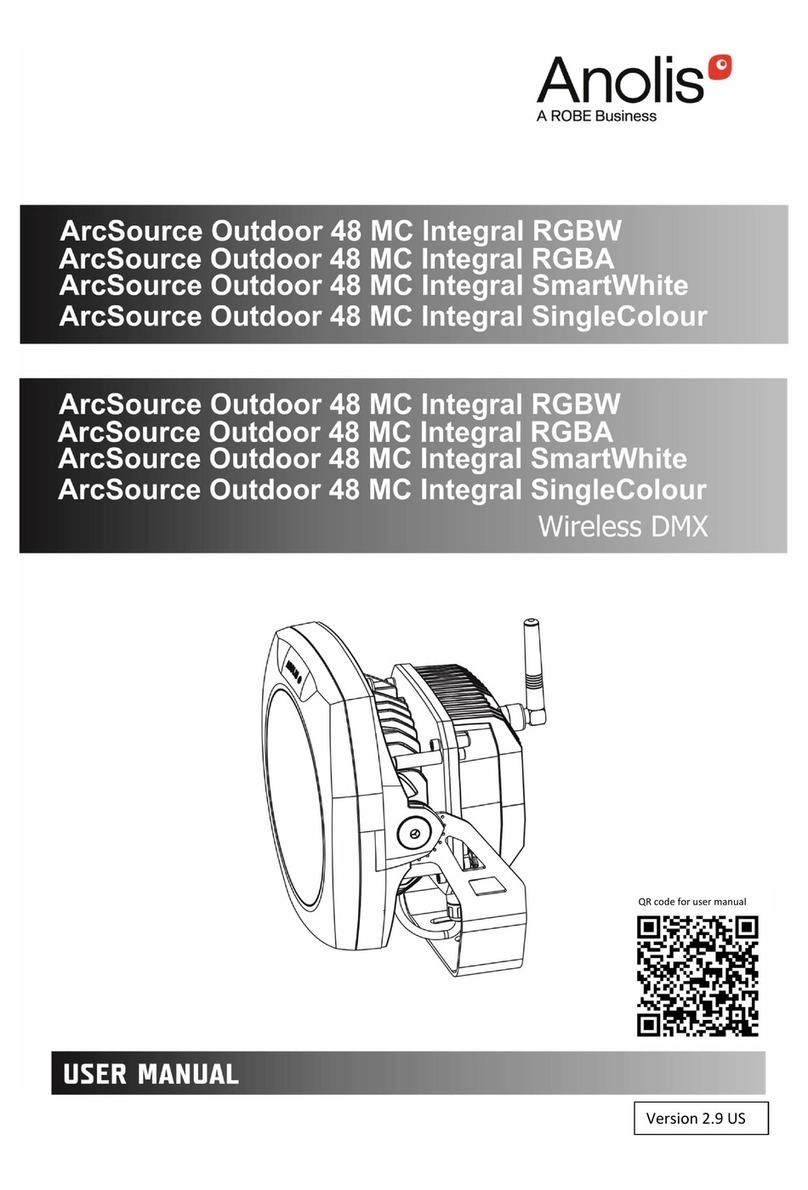
Robe
Robe Anolis ArcSource Outdoor 48 MC Integral RGBW user manual
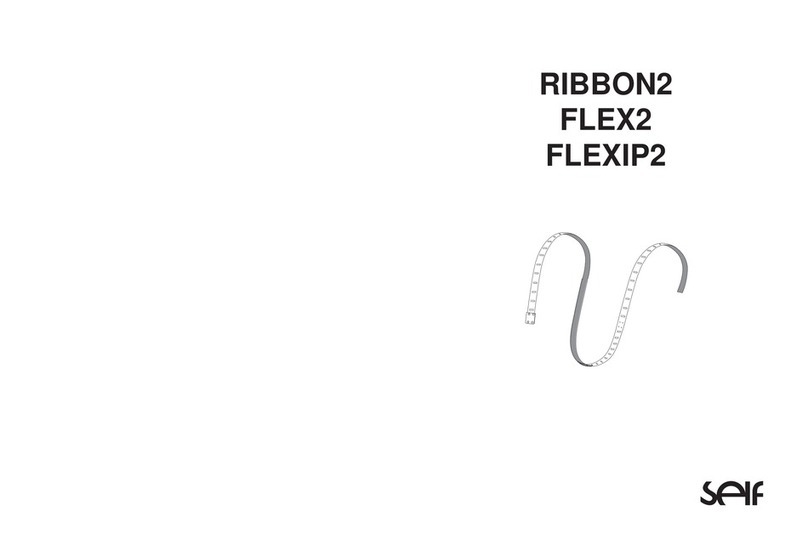
SELF
SELF RIBBON2 Series instruction manual

Epstein-Design
Epstein-Design 15522 manual


